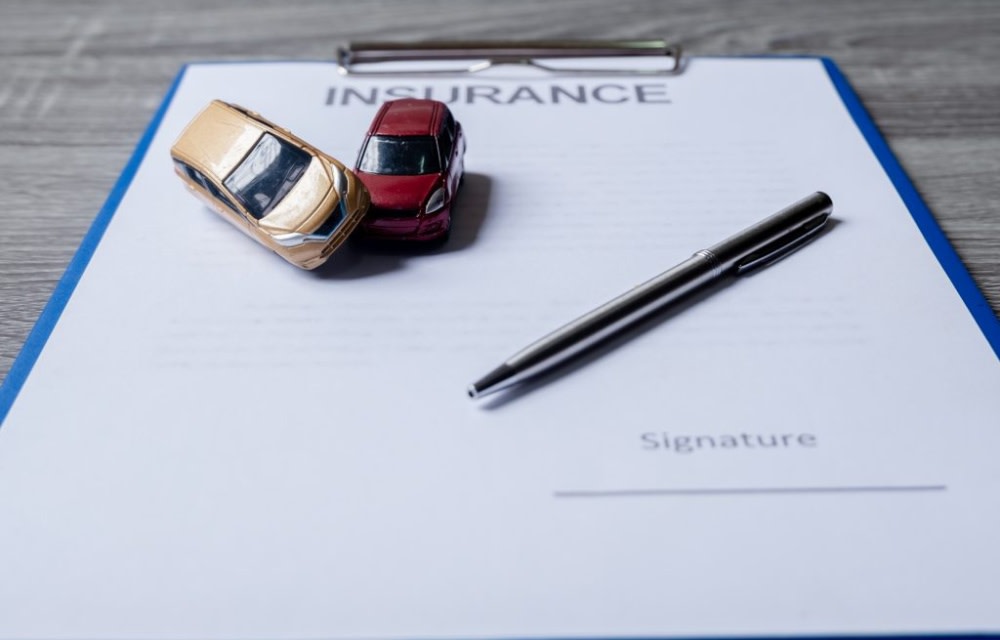
Low Income Car Insurance: Locking in Coverage for Less
TABLE OF CONTENTS
Questions answered:
How do I qualify for low-income car insurance in California, Hawaii, and New Jersey?
What can I do if my state doesn’t have a low-income car insurance plan?
When cash is tight, you might want to drop your car insurance and hope the highway patrol doesn’t catch you behind the wheel. It’s natural to consider that as an option since other expenses like rent and food take priority. If you can get by with public transportation, the pros of canceling your insurance might outweigh the cons. But if you plan to drive to work or to job interviews, you have to find a way to keep your car insurance in force. One solution might be a low-income car insurance plan.
KEY TAKEAWAYS
- 1
State-subsidized low income car insurance is only available in California, Hawaii, and New Jersey.
- 2
You may be able to find low-cost car insurance even if you don’t have access to a low income plan.
- 3
Minimum coverage, broad-form coverage, and usage-based insurance typically have the lowest premiums.
What is low-income car insurance?
Officially, low-income car insurance is state-subsidized insurance available to those who qualify. Unfortunately, however, it’s not widely available. Only three states — California, Hawaii, and New Jersey — currently offer low-income car insurance. If you live in one of those states, you would qualify for the discounted plan based on your income and the size of your household. However, the coverage options are limited, which is less than ideal. But, when you can’t afford traditional car insurance, a state-subsidized plan provides enough coverage for you to drive legally.
Firstly, we’ll cover the low-income car insurance programs in California, Hawaii, and New Jersey. We’ll also provide some strategies to secure cheap premiums in case you live in one of the other 47 states.
California low-income car insurance
California’s Low-Cost Auto Insurance (CLCA) plan offers minimum liability coverage with the option to add medical payments and uninsured motorist coverage. As of this writing, the basic liability premiums range from $244 to $966 annually, depending on your county of residence. Add the optional coverages for medical payments and uninsured motorists, and the premiums go up by $39 to $104.1
Qualifications
To qualify, you must show that your income is less than the maximum shown in the table below. Examples of acceptable proof of income include a paystub, 1099, or W-2. You also must have a valid driver’s license with a good driving record, and your car must be worth $25,000 or less. You can have up to two cars on your CLCA policy, but you can’t hold a traditional auto policy and a CLCA policy at the same time. That’s true even if the plans cover different vehicles. In practice, that means you can’t own more than two cars unless some of those vehicles don’t need insurance.2
Note that these income limits are accurate as of January 2023, but they do change from year to year.
Annual Income | Number of Persons in Household |
$33,975 | 1 |
$45,775 | 2 |
$57,575 | 3 |
$69,375 | 4 |
$81,175 | 5 |
Table data source: Lowcostauto.com
The base CLCA policy includes $10,000 per person and $20,000 per accident in bodily injury liability. Additionally, you can add $1,000 per person in medical payments coverage, $10,000 in uninsured motorist bodily injury per person, and $20,000 in uninsured motorist per accident. You can apply for CLCA online here.
Hawaii low-income car insurance
If you live in Hawaii and are already receiving state financial aid or SSI, you may also be eligible for free, no-fault insurance.3 No-fault insurance, also known as personal injury protection or PIP, covers the cost of medical expenses for you and your passengers after an accident. The state of Hawaii requires you to carry $10,000 in PIP coverage, as well as $20,000 per person and $40,000 per accident in bodily injury coverage, and $10,000 in property damage liability.4
To qualify for financial assistance in Hawaii, you first must meet income and asset requirements. Accordingly, programs are available for families with dependent children, seniors, those who are legally blind, and those who are permanently disabled.5 You can apply by calling 855-643-1643 or by visiting a public assistance office.
New Jersey low-income car insurance
New Jersey’s Special Automobile Insurance Policy (SAIP) provides medical coverage to those who qualify. The plan costs $365 a year and will pay up to $250,000 for emergency treatments after an accident.6
To be eligible, you must have a valid driver’s license and you must be enrolled in federal Medicaid with hospitalization. If you live in New Jersey, your insurance agency can write you a SAIP policy, after verifying your eligibility by checking the number of your Medicaid ID card. You can also call 800-652-2471 to learn more.
How to find cheap car insurance for everyone else
The time needed: 1 hour.
If you live outside of California, Hawaii, or New Jersey, you’re not entirely out of luck. You can still take steps to lower your car insurance prices; here are six strategies to try.
Consider broad-form coverage if you can get it.
Broad-form coverage is a liability-only policy that covers you as the driver, no matter what car you’re driving. It’s affordable, with annual premiums running between a few hundred to $1,000 per year, depending on where you live. However, a big drawback of broad-form coverage is that it’s not available in every state. To illustrate, Motor1 reports that broad-form coverage is only an option in Colorado, Delaware, Idaho, Iowa, Maryland, Mississippi, Nebraska, Nevada, Ohio, Tennessee, and Washington.7
Shop for minimum liability coverage.
We normally don’t recommend broad-form coverage or minimum liability coverage — but either one is preferable to driving without insurance. When you don’t live in a state that offers broad-form coverage, shop for a plan with the minimum coverage your state requires. This is normally some level of bodily injury liability and property damage liability. Just know that driving with those two coverages alone leaves you without protection from your own injuries or damage to your own vehicle.
Take a defensive driving class.
In some states, your insurer may lower your auto insurance rates if you voluntarily take a defensive driving class. Allstate, Farmers, and State Farm, for example, offer these discounts in many states. It’s smart to check with your insurer first before you sign up, though. You’ll want to weigh the cost of the class against the discount potential. The online class might cost you $40 to complete, which is only immediately beneficial if your discount is something more than $40.8
Get a different car.
Some cars are cheaper to insure than others. According to a 2020 Mercury Insurance study, 2016-2019 Chevrolet Sparks and 2016-2019 Chevrolet Sonics top the list of cheapest cars to insure. Among SUVs, vans, and trucks, the Chevrolet Express, model years 2016-2019, and the GMC Savana, model years 2016-2019, have the lowest auto premiums. Further, if you want to drive an electric vehicle, look for a 2016-2017 Chevrolet Spark EV, a 2016-2019 Fiat 500 Electric, or a 2016-2019 Kia Soul EV.9
Try usage-based insurance if you don’t drive much.
Usage-based insurance is an affordable choice if you don’t drive much and you also drive cautiously. A usage-based program ties your premiums to how much you drive; some insurers also look at how safely you drive. Each insurer has its own definition for what’s considered “safe” driving habits, but it normally involves driving during daytime hours only, with minimal speeding and hard braking.
Bundle your coverages.
No doubt you’ve seen the Progressive commercials touting how much you can save by bundling. Depending on the insurer and the type of coverage you have, you might save between $100 and $500 a year by consolidating your different insurance plans with the same insurer.
When you can’t afford car insurance
When you can no longer afford your car insurance, you can cancel your coverage entirely, get a low-income plan, reduce your coverage to the state-mandated minimums, or try usage-based insurance. Canceling your coverage is the least attractive option. You won’t be able to drive legally till reinsured, but you could then put the savings towards raising some cash. One big disadvantage here is that the lapse in coverage will increase your rates when it’s time to reinstate your coverage.
A low-income plan is a workable solution — only if you live in California, Hawaii, or New Jersey. If you don’t, look for either broad-form coverage or traditional insurance with the lowest legal coverage as your best bet. You will have to pay for repairs to your own vehicle, but at least you won’t be driving without insurance. Finally, if you don’t drive much and you want higher coverage levels, usage-based insurance may be your best option.
Last notes:
We can’t stress this point enough: Don’t drive without insurance. It’s not a victimless crime. If times are tough financially, you can either find affordable minimum coverage or you can hide your car keys. While emergencies happen, it's best to avoid situations where you would have to break the law in more than one way at once.
- California’s Low Cost Auto Insurance FAQ. (n.d.). Retrieved February 01, 2021, from https://mylowcostauto.com/faq
- California’s Low Cost Auto Insurance FAQ. (n.d.). Retrieved February 01, 2021, from https://mylowcostauto.com/faq
- Hawaii financial and SNAP benefits rights and responsibilities. (n.d.). Retrieved February 01, 2021, from https://humanservices.hawaii.gov/bessd/fnsrandr/
- Motor vehicle insurance information. (n.d.). Retrieved February 01, 2021, from http://cca.hawaii.gov/ins/consumers/mvi/
- Hawaii financial and SNAP benefits rights and responsibilities. (n.d.). Retrieved February 01, 2021, from https://humanservices.hawaii.gov/bessd/fnsrandr/
- Special Automobile Insurance Policy (SAIP). (n.d.). Retrieved February 01, 2021, from https://www.state.nj.us/dobi/division_consumers/insurance/saip.htm
- All You Need To Know About Broad Form Insurance. (2021, January 05). Retrieved February 01, 2021, from https://www.motor1.com/reviews/408050/broad-form-insurance/
- Allstate Defensive Driving Course & Insurance Discount. (n.d.). Retrieved February 01, 2021, from https://www.safedriver.com/insurance-discount/allstate.html
- Mercury Insurance Names the Most Affordable Used Vehicles to Insure. (n.d.). Retrieved January 22, 2023, https://newsroom.mercuryinsurance.com/Mercury-Insurance-Names-the-Most-Affordable-Used-Vehicles-to-Insure
TABLE OF CONTENTS


Trying to find the best insurance?
We'll help you find the policy that offers the best value for your situation.
Further Reading

Navigating the Digital Insurance Landscape Considerations
A look at the immense value and high customer lifetime potential within the insurance sector.
Read article

When is Term Life Insurance Worth it?
Decide if term life's advantages are worth it: compare whole vs term life insurance, assess top term providers, and delve into in-depth reviews.
Read article

Insurance Binder: Bridging Between Coverage and Confirmation
From car loans to rental properties, insurance binders are required in a variety of situations. Discover the ins and outs of these essential documents.
Read article

Haven Life Review: Providing Prudent and Protective Policies
Uncover the benefits and drawbacks of Haven Life's term insurance policies, along with eligibility details, pricing, and customer feedback..
Read article
Start Comparing Quotes
Search from our learning center to learn everything from how to easily switch your car insurance to the ins and outs of home insurance.
Fill out just one form and get multiple quotes!


